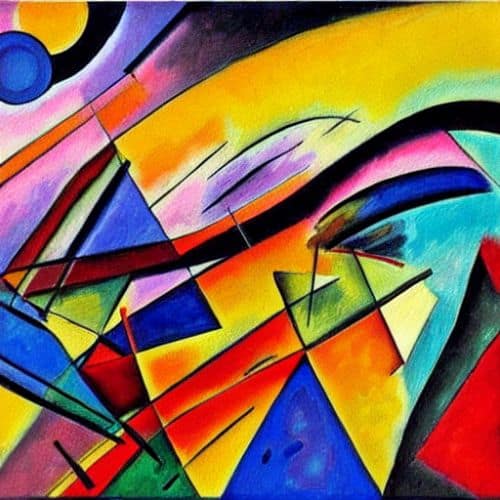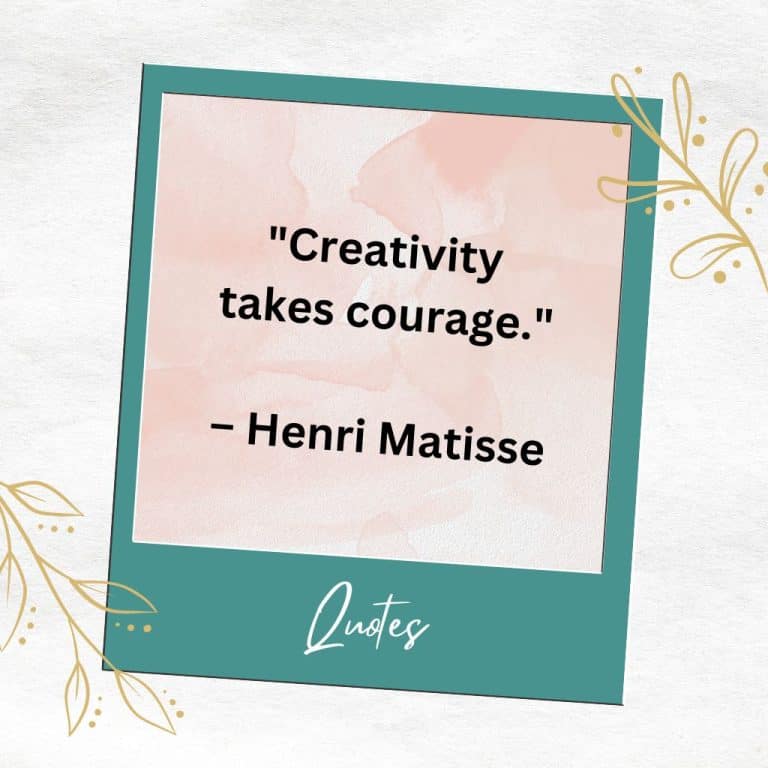Creative Journaling for Beginners: How to Get Started
Creative journaling is a great way to express yourself and document your life. It can also be a fun and relaxing way to spend your free time.
If you’re new to creative journaling, don’t worry! This beginner’s guide will teach you everything you need to know to get started.
I’ll go over the basics of what creative journaling is, different ways to get started, and some tips for making the most of your journals.
Are you ready to get started? Let’s go!
What Is Creative Journaling?
Creative journaling is a process of self-discovery and self-expression that combines the power of words with the freedom of art.
It is a way to nurture your creativity, explore your inner thoughts and feelings, and get in touch with your authentic self. The best part about creative journaling is that there are no rules!
You can write, draw, paint, collage, or do whatever else feels right for you in the moment. There is no wrong way to do it.
Just let yourself go and see where the journey takes you. Who knows what you might discover about yourself along the way!
5 Reasons To Start A Creative Journal

If you’re looking for a fun and creative way to express yourself, why not start a creative journal?
Here are five great reasons to get started:
1. Journals are a great way to document your life. You can write about your successes and failures, your hopes and dreams, and anything else that’s important to you.
2. Keeping a journal can help you to become more self-aware. As you reflect on your life, you may start to see patterns in your thoughts and behavior.
3. Writing in a journal can be therapeutic. It’s a safe space to vent your frustrations, explore your fears, and process your emotions.
4. A journal can be a creative outlet. You can experiment with different writing styles and techniques, and there’s no pressure to perform or meet anyone’s standards but your own.
5. Journals make great keepsakes. They’re a wonderful way to look back on your life and see how far you’ve come. Plus, they make great gifts for friends and family members!
How To Get Started With Creative Journaling
If you’re anything like me, the very thought of journaling can be daunting. Faced with a blank page, what on earth are you supposed to write? And where do you even start?
The good news is that there are no rules when it comes to creative journaling. Anything and everything goes!
A creative journal is the best way to get your creative juices flowing. So go ahead and let your imagination run wild.
If you’re still unsure how to begin the first step of creative journaling then simply start writing. Write about whatever comes to mind, even if it doesn’t make sense.
Don’t worry about grammar or punctuation, just let the words flow out of you.
You can also try adding some color to your journal with crayons, markers, or colored pencils. Draw pictures, doodle, or collage images from magazines. Whatever feels right for you!
There are no wrong answers and there is no such thing as the perfect journal technique when it comes to creative journaling.
10 Creative Journaling Ideas
No.1 – Mind Map Creative Journal

A mind map journal is a brainstorming tool that can be used for creative journaling. To create a mind map journal, you start with a central topic or question and then brainstorm ideas associated with that topic.
When brainstorming with a mind map journal, there are no rules – the aim is simply to come up with as many ideas as possible. Once you have brainstormed your ideas, you can start to organize them into a more logical order.
This can help you to see new connections and ideas that you might not have thought of before. Mind map journals are a great way to brainstorm new ideas and get your creative juices flowing. Give it a try the next time you need to come up with some fresh ideas!
No.2 – Story Creative Journal
For creative types, a story journal can be a lifesaver. When you’ve hit a creative dry spell, it can be tough to come up with new ideas.
But if you flip through your story journal, you’ll likely be reminded of all the great ideas you’ve had in the past. seeing your past creative successes can help inspire new ones.
In addition, a story journal can be a great way to keep track of all your creative ideas. When you get a sudden burst of inspiration, you can quickly jot it down in your journal so you don’t forget it later. Whether you’re needing a creative boost or just want to keep track of your ideas, a story journal can be a helpful tool.
No.3 – Dream Creative Journal
A dream journal is simply a notebook where you write down your dreams. But it can be so much more than that!
A dream journal can be a place to explore your creativity, work through your fears and anxiety, and even get to know yourself better.
The best dream journals are those that are personal and unique to you. So don’t worry about following any rules – just let your dreams flow onto the page however they come to you.
Over time, you may start to notice patterns in your dreaming, which can be really fascinating to explore. Who knows – you might even discover something new about yourself in the process.
So why not give dream journaling a try? It could be the start of a really exciting journey of self-discovery.
No.4 – Music Creative Journal
A music journal can be many things. For some, it’s a creative space to explore their thoughts and feelings about the music they’re listening to.
For others, it’s a way to track their progress and growth as a musician. And for some, it’s both of those things and more.
A music journal can be whatever you want it to be – it’s your own personal space to reflect on your musical journey. So go ahead and start writing (or drawing, or whatever else feels right to you).
The only rule is that there are no rules. Let your creative juices flow and see what comes out. Who knows – you might just surprise yourself.
No.5 – Art Creative Journal
For anyone who loves art, or even just likes to doodle, art journaling is a relaxing and enjoyable way to express yourself.
An art journal is simply a notebook where you can combine words and images to create a visual record of your thoughts and feelings.
There are no rules about what you include in your journal – the only limit is your imagination. You can use any medium you like, from pencils and paints to collage and photography.
And there’s no need to be an experienced artist – the beauty of art journaling is that it’s all about exploring and having fun. So why not give it a try?
No.6 – Photo Creative Journal

A photo journal is a visual style journal that captures your life through photos and accompanying handwritten captions or journal entries.
It can also be a place to document special events, such as a vacation or a wedding. You can use a photo journal to tell your story, record your thoughts and feelings, or simply document the everyday details of your life.
You can be as creative or as simple as you like in your approach to photo journaling. There are no rules, so let your creativity flow!
Whether you’re a seasoned photographer or just getting started, photo journaling is a fun and rewarding way to capture your life on paper.
No.7 – Coloring Creative Journal
A coloring journal is a type of art journal that is created primarily for the purpose of coloring.
Coloring journals often feature pages with line art or patterns that can be filled in with color, and they may also include other types of art journaling content such as prompts, quotes, and sketches.
Coloring journals can be particularly helpful for creative people who struggle with anxiety or who find traditional forms of art therapy to be overwhelming.
The act of coloring can be calming and therapeutic, and it can also be a fun and creative way to express oneself. Whether you use markers, colored pencils, or watercolors, a coloring journal can be a beautiful and unique reflection of your inner thoughts and feelings.
No.8 – Tracking Creative Journal
A tracking journal is a type of journaling technique that can be used to track any sort of information.
This could include tracking your daily mood, your thoughts on current events, or even your progress on a personal goal.
The key to using a tracking journal effectively is to be consistent with it. Try to journal every day, or at least several times a week.
Keep track of whatever information you want to track, and over time you will start to see patterns emerge.
You may find that you’re more productive on days when you eat breakfast, or that you tend to have more negative thoughts when you’re feeling stressed.
By becoming aware of these patterns, you can make changes to your habits and improve your overall well-being.
No.9 – Free Writing Creative Journal
A free writing journal is a creative journaling technique that can help to jumpstart the creative process.
It involves setting a timer for a specified amount of time and then writing non-stop for the entire duration.
The goal is to keep the pen moving across the paper, without worrying about spelling, grammar, or even making sense.
This can be a great way to break through creative blocks, as it allows the mind to stop overthinking and simply flow.
Once the timer is up, you can go back and edit your work, or even use it as-is. either way, a free writing journal can be a great tool for getting those creative juices flowing.
No.10 – Mixed Media Creative Journal

A mixed media journal is a type of journal that uses a variety of mediums to inspire creative ideas.
Common materials used in mixed media journals include paint, pencils, fabric, and photos. The goal of a mixed media journal is to create a visually interesting and unique record of your thoughts and experiences.
Mixed media journals can be used for a variety of purposes, including tracking your daily mood, documenting a trip, or simply recording your thoughts and musings.
Whether you’re a seasoned artist or a complete novice, you’ll find that working in a mixed media journal is a fun and relaxing way to express yourself creatively.
Creative Journal Prompts
If you’re struggling to get started, here are a few prompts to get you going:
- Write about a time when you felt really proud of yourself.
- Write about your day-to-day experiences.
- What are some things that make you feel happy and fulfilled?
- What’s your earliest memory? Describe it in as much detail as possible.
- Write short stories and ideas
- What would be your dream vacation destination? Why do you want to go there?
- Make a list of things you’d like to achieve in the next year (or in your lifetime).
Remember, there are no wrong answers in creative journaling. Just let your thoughts and feelings flow onto the page, and see where they take you!
Helpful Tips For Successful Creative Journaling
Here are a few tips to help you make the most of your creative journals:
- Set aside some time each day to write in your journal. Even just 15-20 minutes will do.
- Find a quiet place to write where you won’t be interrupted.
- Invest in a good-quality journal that you enjoy writing in.
- Don’t worry about making mistakes. Just let the words flow out of you and don’t overthink it.
- Most importantly, have fun! Let your creativity run wild and see where the journey takes you.
Taking it to the Next Level: How to Step Up Your creative Journaling Game
For some people, journaling comes naturally. They can sit down and pour their heart out onto the page without giving it a second thought.
However, for others, the journaling process can feel a bit daunting. If you fall into the latter category, don’t worry – there are ways to make journaling more creative and fun.
First, try using different mediums. In addition to traditional pen and paper, you can journal with crayons, paint, or even chalk. Or, if you’re feeling really adventurous, you can try journaling in a completely non-traditional way – by recording your thoughts on audio or video.
Another great way to get more out of your journal is to use prompts. Prompts can help to jump-start your creativity and get your mind thinking in new ways.
And finally, don’t be afraid to experiment with different journal formats. A journal doesn’t have to be a linear narrative – it can take on any form you can imagine. So go ahead and let your creativity flow!
Alternatives To Creative Journaling
If you’re someone who loves to express themselves creatively, journaling can be a great outlet.
However, sometimes it’s hard to get started, or you may feel like you’ve hit a creative wall. If that’s the case, here are a few alternative activities that can help jumpstart your creativity.
One option is to take up painting or drawing. This can be a great way to get your creative juices flowing, and you’ll end up with a beautiful piece of art when you’re finished.
If you’re not artistically inclined, don’t worry – there are plenty of other options. Maybe try writing poetry or short stories. This is a great way to flex your creative muscles and explore different ways of expressing yourself.
Or, if you’re feeling really adventurous, try your hand at songwriting. There’s no better way to get in touch with your creative side than by making your own music.
Creating a vision board is also another alternative to creative journaling. This is a great way to express your artistic side and visualize your dreams and goals, and it’s also a lot of fun to put together.
So next time you’re feeling stuck, don’t be discouraged. There are plenty of other ideas to get your creativity flowing – all it takes is a little exploration. Who knows, you might just find your new favorite hobby in the process.
Conclusion
Creative journaling can be a great way to express yourself and explore your thoughts and feelings. It can also be a fun, creative outlet that helps jumpstart your creativity.
If you’re struggling to get started with creative journaling, or if you’ve hit a creative wall, try some of the alternatives we’ve suggested.
There are plenty of other ways to unleash your creativity – all it takes is a little exploration.






